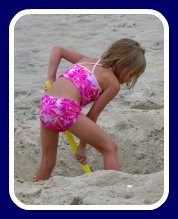Heatstroke
When temperatures rise so does the risk of Heatstroke and Heat Exhaustion. Being outdoors in hot humid weather can quickly lead to dehydration.

Heat stroke can be fatal and requires immediate medical attention.
Common causes of heat stroke are:
- Prolonged exposure to heat and sun
- Dehydration
- Prolonged or excessive exercising
- Excessive clothing
Signs of Heat Stroke
- Severe headache
- Rapid shallow breathing
- Weak rapid pulse
- Erratic behaviour
- Extreme confusion
- Dry, red and hot skin
- Seizures
- Unresponsive
- Unconsciousness
First Aid Treatment for Heatstroke and Heat Exhaustion are much the same and is as follows:
- If a person has a temperature of 40°C (104°F) or displays any of the symptoms of heat stroke seek medical help immediately
- Remove the person from the heat
- Remove clothing and have the person lie down
- Elevate the feet slightly about 30 cm (12 inches)
- Place a cold compress on the head, neck, groin and under the armpits
- Use fans to cool down the body
- If the person is awake you can place them in a cool (not cold) bath or if outside spray gently with a garden hose
- If the person is awake give them sips of a salt beverage. Gatorade, or similar, or a teaspoon of salt in a 4 cups (1 quart) of water, drink half a cup every 15 minutes. Cool water is also acceptable
- If muscle cramping is a problem massage the cramp gently until the muscle relaxes. Muscle cramps are extremely painful so be guided by the person as to how hard or gentle to be.
- Watch for signs of shock (bluish lips and fingernails, loss of alertness) call your local emergency services immediately
Some DO NOT's:
- DO NOT underestimate the seriousness of heat exhaustion and heat stroke especially in children.
- DO NOT give a child or person aspirin or pain killers. These will not help.
- DO NOT give salt tablets.
- DO NOT give any liquids that contain alcohol or caffeine. These are diuretics and will hinder the body's ability to re-hydrate.
- DO NOT use alcohol rubs on the body.
- DO NOT give an affected person any liquids (including salt drinks) if the person is vomiting or losing consciousness.
You may also be interested in learning about:
Photo by phaewilk
Home
››
Heatstroke